Pat Hutchins, who has died aged 75, was an award-winning illustrator and author, best known for her 1968 children’s book Rosie’s Walk. She created more than 40 picture books and short novels, all of which show her storytelling skills, her tremendous sense of humour and her warmth for children.
For two years from 1966, Pat and her husband, Laurence, lived in New York, and it was here that she first found recognition. In a recent talk looking back on her career, Pat described how she followed advice from Susan Hirschman, then editor-in-chief of Macmillan children’s books, and turned a long “and in fact very, very boring story” about animals into the simplicity of Rosie’s Walk. “There was one line in the story: ‘This is the fox who never makes a noise.’ Susan picked up on that one line and said write a story about that.”
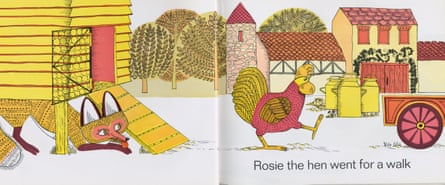
Pat’s new story became a 32-word text the success of which lies in what it does not spell out. While the words describe Rosie the hen’s simple and apparently uneventful walk around the farmyard – “around the pond, over the haycock, past the mill, through the fence, under the beehives” – the pictures, brilliantly using the storytelling possibilities of the double page spread, show something completely different. The interplay between the words and pictures creates a masterpiece of dramatic irony made all the more fun for young readers as they have the satisfaction of being more knowing than Rosie herself.
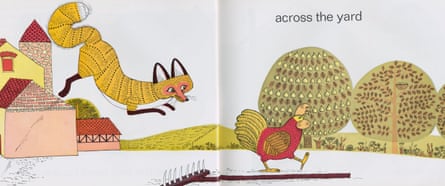
Rosie’s Walk was published simultaneously in the US and the UK in 1966, and has remained in print ever since. The book’s simple, clean illustrations, created out of only three colours as was the norm at the time, have a style that has gone in and out of fashion; over those 40 years the images have sometimes felt “contemporary” – as they do now – and sometimes less so, but they have always been attractive to children.
Born in Catterick Camp, near Richmond, North Yorkshire, where her father, Terry Goundry, was an army sergeant, Pat was the sixth of seven children. Her parents separated after the second world war and the children were brought up by their mother, Lily, who worked at the Derwent pencil factory in Keswick, Cumbria, then as a nurse and school caretaker back near Richmond.
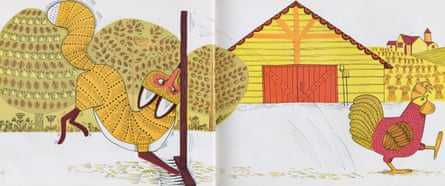
Pat’s interest in art, inspired by her observations of the Yorkshire countryside, was encouraged by a local couple who gave her a sketchbook, rewarding her for illustrations with chocolate. At 16 she gained a place at Darlington School of Art and subsequently studied for a national diploma in illustration at Leeds College of Art.
Moving to London after college, Pat tried to find work as an illustrator but jobs were hard to come by. Instead, in 1963, she took a job as an assistant art director at the advertising agency J Walter Thompson. There she met Laurence Hutchins, whom she married in 1966, and they were relocated by his firm to New York the same year.
Pat was prolific for more than three decades from the late 1960s, creating picture books and highly illustrated novels for young readers, on her own and in collaboration with Laurence, also an illustrator. Pat’s solo titles include the much-loved Good Night, Owl (1972), a story with the same dramatic interplay as Rosie’s Walk, about an owl giving night-time payback for all the disturbance he has suffered trying to sleep during the day; and The Wind Blew, a delightful cumulative picture book told in verse (sadly now out of print), for which she won the 1975 Kate Greenaway medal.
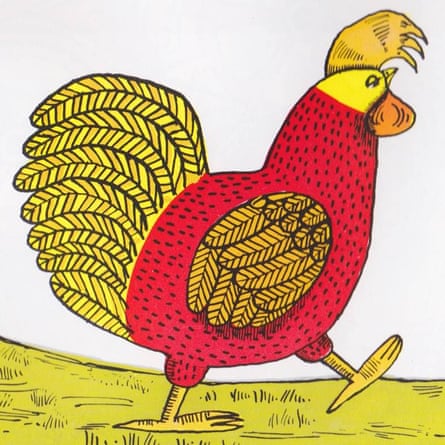
She also told stories with strong family themes, such as Titch (1971) and its sequels, You’ll Soon Grow into Them, Titch and Titch’s Windy Day, light and touching tales,drawing on her experiences with her sons, Morgan and Sam, of the dynamics of sibling relationships. She created The Very Worst Monster (1985) and Where’s the Baby? (1988), in which the interplay between monster parents, grandma and children is demonstrably very human, despite the green noses, long ears and claws.
Pat wrote longer stories, including The House That Sailed Away (1975), a rollicking adventure complete with a flood, desert island, pirates and treasure, and Follow That Bus! (1977), The Mona Lisa Mystery (1981) and The Curse of the Egyptian Mummy (1983), with a setting recognisable as her local primary school in Hampstead, north London. These titles, for which Laurence created all the illustrations, demonstrate how skilful Pat was as a storyteller in words as well as pictures.
The Hutchins had returned to London in 1968 but Pat continued to work with Hirschman in New York as her primary editor, moving with her from Macmillan when Hirschman founded Greenwillow Books in 1974. As a result, Pat’s books, although very English in feel, were originated in the US (where they were also highly prized) and co-published in the UK. After Hirschman’s retirement, Pat and Laurence worked with Anne McNeil, first at Bodley Head and then Hachette. McNeil described Pat as “modest, beautiful inside and out and a wonderful creator of books”.
After a break from writing following Laurence’s death in 2008, Pat started working on ideas for a sequel to Rosie’s Walk, which resulted in Where, Oh Where, is Rosie’s Chick?, published in 2015. McNeil described the process as “a really enjoyable experience. We spent a couple of years planning it. We shared roughs, and glasses of wine, and Pat crafted a really strong follow-up title to that wonderful first book. It was an amazing honour to publish her final children’s book.”
Pat and Laurence’s home in Hampstead was an elegant, wood-panelled Georgian house, full of artwork by them and their friends and wonderful artefacts gathered over the years: Laurence’s passion for trains was ever present. After his death, Pat moved to an artist’s studio, with plenty of room for her sons and their families to visit and a workspace filled with light, where she was creating a new book up until her death, with a picture of Hirschman watching over her.
She is survived by Morgan and Sam, and her grandchildren, Harry, Billy, Stanley and Ben.
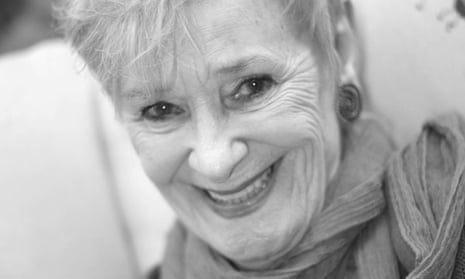
Comments (…)
Sign in or create your Guardian account to join the discussion